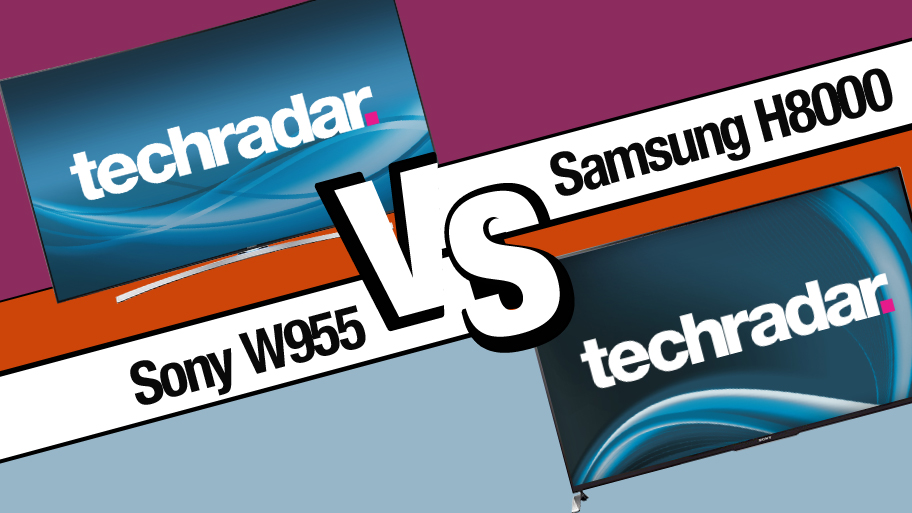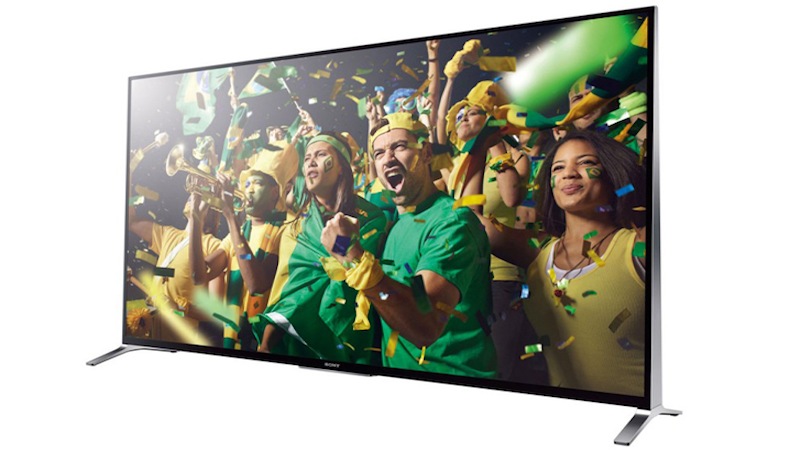Battle of the flagship HD TVs: Samsung H8000 vs Sony W955

The TV business is about as hazardous and toxic as it gets from a business point of view, with lots of huge brands fighting for market share while most suffer astronomical financial losses.
It's a pretty grim tale in that sense, but on the other hand we're also seeing incredible year-on-year improvements in picture quality, smart TV features, resolution and a renewed trend for superior sound.
The products have never been better and prices never more reasonable – great news for us, less great news for the big brands.
Take a look at the latest HD flagship TVs (that's HD, not 4K) from perhaps the two biggest names in TV – Sony and Samsung – and you immediately see how fortunes can change year to year.
Cutting corners costs
Sony, having consistently produced some of the very best HD and 4K TVs over the last couple of years, has this time released something akin to a dud. Perhaps misfire is a better word, but either way, the 55-inch flagship Sony KDL-55W955 is a disappointment.
Meanwhile, the triumphant 55-inch Samsung UE55H8000 with its sexy looks and excellent picture performance, has come away with the title of best HD TV on the market, curves and all. So what gives? Wasn't Sony supposed to be the brand to beat?
There are three key differences between these TVs. The Samsung's curved screen is the most obvious. The price is another, the Samsung costing £700 more at £2,300 versus £1,600. And the third and most telling factor in this case, is in the LCD panels the brands have used. The difference is night and day.
Sign up for breaking news, reviews, opinion, top tech deals, and more.
Panel beaters
Samsung is itself a manufacturer of LCD panels and always saves the best ones for its own products. That means that while its processing or local dimming technology hasn't always been the absolute best, it's pictures are still usually right up there.
Meanwhile Sony, which dropped out of the generally loss-making LCD panel business a long time ago, has to buy panels in from other manufacturers like Samsung, LG and Sharp.
In recent years it's made up the difference using its excellent X-Reality Pro processing engine and Triluminous colour technology. Last year's 4K models actually used panels from China instead of a big brand which was seemingly a cost-cutting risk that paid off spectacularly - the products were excellent and the prices reasonable.
But not having a consistent supply of high quality core panels looks to have cost Sony with its W9 series this year.
Sony opted to use LG IPS passive 3D panels in its W9 HD models, a move which appears to have backfired. These panels appear unable to rival the contrast performance of the latest Samsung panels, and it's resulted in a would-be brilliant Sony TV that's horribly undermined by some iffy black levels.
The conclusion is that they're out-performed by Sony's own cheaper and wonderous W8 series (which doesn't use LG panels).
Here's some of what John had to say about the Sony's picture performance:

Sony KDL-55W955 review
"It's apparent almost immediately that the panel Sony has chosen to build the 55W955 around is nowhere near as secure in the contrast department as the superb 50W829. This fact makes itself known in a number of ways. The most troubling of which is a general grey mist that hangs over any dark scenes, reducing their naturalism and dynamism. The greyness can also cause some greyscale detailing to slide into oblivion, and is unbearably bad if you attempt to watch the TV without using its LED Dynamic Control system." Read the full review
Meanwhile, here's John on Samsung's rival 55-incher:

Samsung UE55H8000 review
"It's quickly apparent that this is a seriously excellent TV. It's as good a performer as the HD world has delivered to date in many ways. The star of the show is its impeccable black level response. Dark scenes look exceptionally natural and involving thanks to the TV's ability to produce a black colour that actually looks black, rather than some shade of grey like we still see on other LCD TVs." Read the full review
We're yet to receive flagship 55-inch full HD LCDs from the other two heavyweights - Panasonic and LG - so the order of superiority could conceivably change again soon - stay tuned to TechRadar and we'll bring you reviews of all the hot models as they reach the shelves.

James was part of the TechRadar editorial team for eight years up until 2015 and now works in a senior position for TR's parent company Future. An experienced Content Director with a demonstrated history of working in the media production industry. Skilled in Search Engine Optimization (SEO), E-commerce Optimization, Journalism, Digital Marketing, and Social Media. James can do it all.